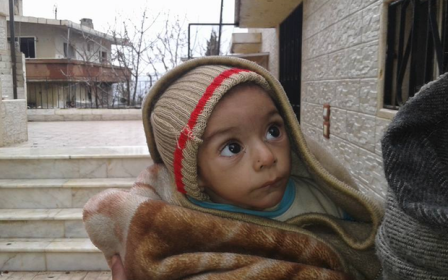UN backpedals on airdrop push for besieged Syrian towns

The United Nations on Monday backtracked on its plan to move ahead with airdrops of humanitarian aid to Syria, saying it was focusing for now on securing access for land convoys.
UN aid chief Stephen O'Brien told the Security Council last week that a formal request for Syrian permission to begin airdrops and air bridges would be delivered to Damascus on Sunday.
But no such request was made, with UN officials instead presenting a letter seeking Syrian approval for ground convoys to deliver food and medicine to 34 areas including 17 besieged towns.
"Our main focus is on land delivery, given the challenges in terms of safety and logistics of air deliveries," said UN spokesman Stephane Dujarric.
"If at some point, we decide that the land access will not be granted, we will look more at the airdrop option."
Syria last week agreed to grant access for the month of June to 23 of the 34 areas on the UN list for delivery, including 12 besieged towns, but the UN said this was insufficient.
It gave Syria until 10 June to respond to the request for land access, said Linda Tom, a spokeswoman for the UN office of humanitarian affairs in Damascus.
If no overland approvals are granted by then, "the UN will request approval for access by air wherever this is feasible to reach people in need, as a measure of last resort," she added.
The UN's reversal, however, should not be seen as surprising, according to Valerie Szybala, the executive director for The Syria Insitute, a think tank based in Washington, DC.
"I did not expect the UN to conduct airdrops. Airdrops were a negotiation tactic. Although disappointing, it’s not surprising. They’re not going fly into Syrian airspace without the government’s approval," she told Middle East Eye.
"Air dropping around Damascus is a bigger threat to the Syrian government’s ability to maintain control in these areas," she added.
Even though aid airdrops are out of the question for now, Szybala told MEE that they are an effective means of delivering aid to those in need.
"Airdrops has proven effective in Deir Ezzor, which is the only besieged area where they’re currently carried out and the reason is because this area is besieged by ISIS and there are government forces trapped inside, so the Syrian government isn’t obstructing the aid from being airdropped," she said.
"Since April, airlifts to Deir Ezzor have been regular – several times a week, and they have had a tremendous job at improving the humanitarian conditions there," she explained.
According to the United Nations, at least 592,000 people live under siege in Syria - the majority surrounded by government forces - and another four million live in what the UN classifies as hard-to-reach areas.
Siege Watch, an independent monitoring network, however, has said that figure is more than a million, while the NGO Doctors Without Borders (MSF) puts it at almost 2 million.
World powers decided last month that if aid continued to be blocked, the UN would begin airdrops on 1 June, although such an operation would have required Syrian approval and presented high risks.
Russia, Syria's ally, said it was prepared to support the request, but stressed that delivery by land was the most effective and safest way to reach those in need.
The UN has said that helicopters would have to be used for air bridges to 15 besieged areas because they are densely populated.
"The amount of supplies you can do in one cargo plane is the equivalent of one truck, so obviously we would rather, even if we have to wait a few days, go through the land routes than take the risks of the airdrops," said Dujarric.
Stay informed with MEE's newsletters
Sign up to get the latest alerts, insights and analysis, starting with Turkey Unpacked
Middle East Eye delivers independent and unrivalled coverage and analysis of the Middle East, North Africa and beyond. To learn more about republishing this content and the associated fees, please fill out this form. More about MEE can be found here.




